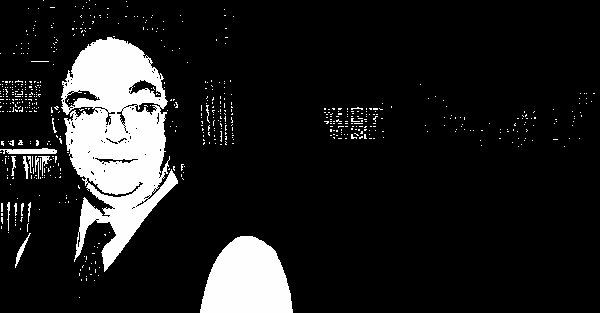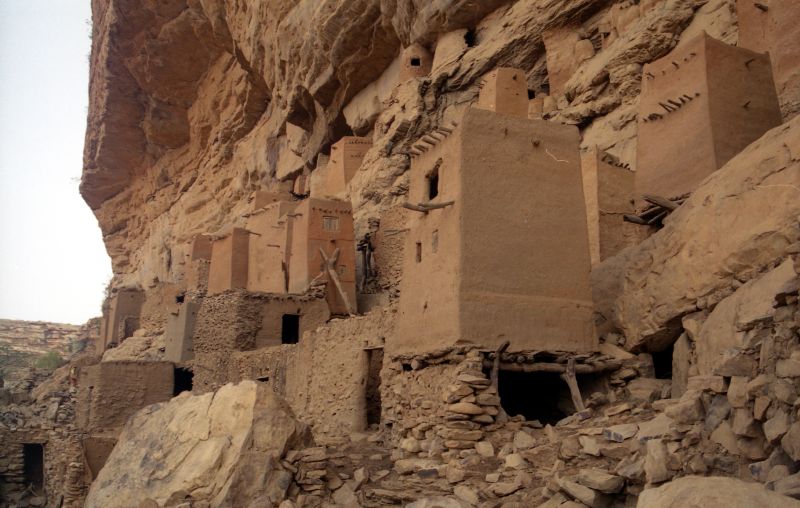The Latest from Boing Boing |  |
- Interview: Laird Scranton
- Locus Award winners
- LulzSec dumps what they claim is "final" release, with signoff statement: "50 Days of Lulz"
- "Hot News" doctrine gets a body-blow
- Great aunt Kathleen was an automaton
- Solar-powered 3D sand-printer
- Seagull steals video camera, thereby creating seagullcam
- Buddy Holly's first-ever recording, from 1949
- Wilco's Solid Sound Festival under way in Massachusetts
- Alex Jones: "The DMT elves want the elites to kill us all."
- Apple II Concert streaming live from Machine Project in LA today, with Jason Torchinsky
- Caturday!
- They Might Be Giants launches video contest judged by John Hodgman
| Posted: 21 Jun 2011 06:25 PM PDT
Laird Scranton is an independent software developer from Albany, New York. He is the author of several books and articles on African and Egyptian mythology and language. Avi Solomon: Who are the Dogon? Laird Scranton: The Dogon are a modern-day African tribe from Mali who seem to observe many interesting ancient traditions. In fact, their culture can be seen as a kind of cross-roads for several important ancient traditions. As just a few examples, they wear skull caps and prayer shawls, circumcise their young, and celebrate a Jubilee Year like ancient Jews, they observe the same calendars and establish their villages and districts in pairs called "Upper" and "Lower" like ancient Egypt, and they preserve a detailed cosmology that bears close resemblance to Buddhism, only expressed using ancient Egyptian terms.
Avi: What got you interested in the Dogon? Laird: I came across references to the Dogon in a book called "Unexplained" by Jerome Clark, one of whose chapters discusses the mystery of how the Dogon - without the aid of modern telescopes - may have acquired specialized knowledge of astronomy. Avi: How do the Dogon embody and transmit their knowledge? Laird: The Dogon have no native written language and have apparently transmitted their knowledge from generation to generation orally, with the assistance of a complex set of mnemonic symbols and drawings, beginning with a grand mnemonic aligned ritual structure called a granary. Although the Dogon religion is a secret or esoteric tradition — meaning that only initiates to the religion are allowed to learn its innermost secrets — it is open to any person (male or female, Dogon or non-Dogon) who sincerely wishes to pursue it. A Dogon priest is required to respond truthfully to any question that is deemed appropriate to the initiate's status, and to remain silent (or lie, if necessary) in response to any question that is deemed to be "out of order."
Avi: What is the significance of Dogon cosmological myths? Laird: The Dogon see their myths both as an instructed civilizing plan for humanity and as a coherent description of the processes of creation — both cosmological and biological. These myths begin with what are essentially fireside stories that describe in general terms how the stars and planets were formed, and include many of the archetypical themes and storylines of classical mythology, such as the Greek notion of stealing fire from the gods. However, the next level of myth and symbolism is intimately intertwined with civilizing skills such weaving, agriculture, metallurgy, and so on. Each act of daily Dogon life carries with it a degree of cosmological symbolism, and so each daily act reinforces what a Dogon tribesperson learns about the processes of creation. Avi: How did the Dogon know that Sirius had a companion star and the exact length of it's orbit? Laird: The contention of the Dogon priests is that they learned it from revered ancestor or teachers, who were more capable and knowledgeable than the Dogon. Avi: Could this knowledge have been transmitted to the Dogon by westerners? Laird: A person could argue that the Dogon learned it from westerners, however in my opinion there are some significant difficulties with that point of view. First, both Dogon cosmology and their concepts relating to Sirius are given using ancient Egyptian words. For example, the great Dogon festival of Sirius — called the Sigi — is arguably the Egyptian word skhai, meaning "to celebrate a festival." In fact, in my books I trace virtually every key cosmological term of the Dogon to likely ancient Egyptian counterparts. Moreover, these words typically carry at least two levels of meaning, both of which can be shown to have existed in similar form in ancient Egypt. So the first difficulty lies with finding a western source that could have credibly given this information to the Dogon couched in ancient Egyptian words. Moreover, many of these same words are known to exist in the languages of other African tribes, so we would then have to explain how they came to be adopted in those languages. Avi: Did the Dogon trick Marcel Griaule? Or did Griaule make up the Dogon mythology himself? Laird: In his day, Marcel Griaule was the pre-eminent French anthropologist. He and his team studied the Dogon over the course of three decades, from the 1930'ss to the time of Griaule's death in 1956. Griaule characterized the Dogon religion as a closely-held secret tradition. In 1975, the Dogon became controversial when Robert Temple suggested that their Sirius knowledge could represent evidence of an alien contact. In the 1980's, Belgian anthropologist Walter Van Beek conducted a much briefer re-study of the Dogon, which turned up no evidence of Griaule's tradition. Based on this, Van Beek — rather than surmising that he might have failed to successfully penetrate what Griaule described as a secret tradition — concluded that the obliging Dogon priests had invented a cosmology to satisfy Griaule's questions. Van Beek also concluded that the Dogon granary was a form known only to Griaule. In 2007 — fifty years after Griaule's death — my daughter returned from a visit to India excited to have seen aligned ritual structures called stupas that she felt resembled my Dogon granary. I pursued the resemblance and soon discovered that the cosmological symbolism of a Buddhist stupa is a point-for-point match with the symbolism reported by Griaule for the Dogon granary. In fact, the Dogon are known to have migrated to their current location from a region of North Africa that was a known home to ancient Buddhism. In other words, for Professor Van Beek to be correct, we'd have to believe the Dogon priests capable of having casually invented Buddhism. Likewise, the granary form that Van Beek concluded was known only to Griaule, was in fact familiar to large populations all across India and Asia. Avi: How is the Dogon granary related to the Buddhist Stupa? Laird: Each represents the Grand Mnemonic of their associated cosmologies — a structure whose plan recreates key shapes that relate both to the processes of creation and to the acquisition of civilizing skills. Both are based on the same basic plan, evoke the same series of geometric shapes in the same sequence and assign the same symbolism to those shapes. Both are tied to detailed cosmologies that define the processes of biological and cosmological creation, defined by matching symbols and concepts. Avi: Can you give some significant examples of connection between Dogon and Egyptian words? Laird: Each key term of Dogon cosmology comes packaged as a kind of bundle that includes: 1) Its pronunciation. 2) At least two logically-disconnected meanings, such that you cannot reasonably guess the secondary meanings simply by knowing the first. 3) An associated cosmological drawing. 4) A relationship to a stage of creation and/or mythogical character within the cosmology. When proposing correlations between Dogon and Egyptian words, my intent is to demonstrate likely correlations between each of the bundle's elements. While developing these matching sets of elements, I came to realize that the most consistent matches were to the Egyptian Hieroglyphic Dictionary of Wallis Budge, not to the German Worterbuch that is preferred by many modern Egyptologists. The consensus is that Budge's dictionary is outdated and often unreliable — some Egyptologists go so far as to say that Budge could barely read Egyptian hieroglyphs. Nonetheless, I realize that it would be unreasonable to suggest that Budge could have been grossly wrong about Egyptian words and yet still somehow in predictable agreement with the Dogon. And so I offer the body of interrelated Dogon words as new evidence to show that Budge must have been substantially correct in his understanding of Egyptian words of cosmology. In my books I provide detail to support various Dogon/Egyptian word correlations. Examples include the name of a Dogon mythological character named Ogo, who plays the role of "light" in the Dogon creation myths, and the name of the Egyptian light god Aakhu. The Dogon counterpart to an atom is called po, while the Egyptian term for "mass, matter, substance" is pau. Components of the po are referred to using words such as sene, and sene bennu that are likely counterparts to the Egyptian words sen and sennu. The Dogon term bummo is a likely correlate to the Egyptian phrase bu maa, both the Dogon and Egyptian terms nu refer to water. The name if the Dogon creator god Amma is commonly correlated to the name Amen in the languages of various African tribes. The Dogon nummo is a likely counterpart to the Egyptian phrase nu maa. I have attempted to correlate each key Dogon cosmological term to an Egyptian counterpart and supported those correlations with other "bundled" evidence - relationship to a common drawn shape, relationship to a matching mythological character, sharing position in the overall cosmology, and so on. Avi: What are the Dogon parallels to Judaism? Laird: I've mention that the Dogon wear skull caps, prayer shawls, circumcise their young, and celebrate a Jubilee year. They also have a tradition of ancestral families similar to the tribes of Judaism — one called Lebe (similar to the Levi in Judaism) and a priestly class called Hogon (similar to the Cohen in Judaism). The traditional symbolism of a Jewish altar and a Jewish chuppa are a close match for the Dogon granary and Buddhist stupa. Many of the Egyptian cosmological words are also Hebrew words — for example, a skhet is defined as a hut made of twigs and branches, similar to a sukkah. Budge often uses Hebrew words as a basis for comparison for pronunciation and meaning of Egyptian hieroglyphic words and the Dogon terms support these comparisons. Early in my studies, seemingly obvious parallels between Dogon words, symbols, concepts or rituals and those of Judaism helped convince me that the Dogon could be an important subject for study. Avi: What wider speculations about the development of civilization can you draw from your comparative studies? Laird: Each culture that I've studied who outwardly shares what I call "signature aspects" of this same cosmology understands it as an instructed civilizing plan, which they associate with knowledgeable teachers. Some explicitly claim that these teachers were non-human. Many - like the ancient Egyptians - state that they received their systems of writing, agricultural grains, or skills of metallurgy from "gods". The suggestion is that there was - at some time prior to 3400 BC - a global Peace Corps - like effort to raise humanity up from the state of hunter-gatherers to a more civilized state. From that perspective, the many striking similarities we see globally in ancient myth and symbol would be the surviving product of a shared system of instruction. Although many argue that cultures of similar capability and with access to similar environments and materials would naturally evolve similar themes and form, in my opinion these arguments beg the question of the often very complex symbolism that commonly attaches itself to those forms. For example, the four faces of the pyramid-like Dogon granary are associated with the same four star groups as pyramids in the Americas, which were then used to regulate an agricultural cycle. Both cultures conceived of their pyramids as a woman lying on her back. Perhaps most important is the notion, corroborated from culture to culture , that the system was instructed. One purpose of my studies has been to try to illuminate by way of comparison some of the very sensible aspects of that apparent plan. Avi: What is the situation of the Dogon today? Laird: The Dogon represent about 300,000 individuals today and are facing the many pressures of contact with more modern societies and technologies. Tourism has created an industry for them and provides a venue for their interesting traditional artwork. Even so, their inhospitable location in a hot, remote desert climate helps to maintain their independent identity. One can only hope that a cultural system that has proved its stability over periods of almost three thousand years in Egypt and perhaps an additional two thousand years, the Dogon will sustain itself in the midst of many modern pressures. |
| Posted: 25 Jun 2011 09:54 PM PDT Locus magazine has announced the winners of this year's Locus Award: Announcing the 2011 Locus Award Winners |
| LulzSec dumps what they claim is "final" release, with signoff statement: "50 Days of Lulz" Posted: 25 Jun 2011 04:42 PM PDT  The screengrab above is the "navy.mil owned" graphic, and purports to be evidence of defacement of the US Navy website. The file list:
50 Days of Lulz.txt 2.64 KiBA copy from what appears to be their signoff statement follows (Pastebin isn't forever). Who knows whether it is what it appears to be, or just another prank. It mentions in closing that LulzSec is a "crew of six". Wonder what exactly led to the decision to shut down right now, if in fact that's what's really happening? Too much heat? Too many IRC leaks? That latest doc from "The Jester"? The UK arrest was too close to home? Hard to know from the outside, at this point.
|
| "Hot News" doctrine gets a body-blow Posted: 25 Jun 2011 11:00 AM PDT Electronic Frontier Foundation copyright attorney Corynne McSherry has news about Barclays v FlyOnTheWall.com, a case that asked the Second Circuit Court of Appeals to rule on whether the "Hot News" doctrine could be applied in the digital era. "Hot News" is an obscure corner of law that lets newsagencies treat publicly available facts as property and prevent others from reporting on them for a set time. In Fly, the court heard argument that FlyOnTheWall.com was endangering the business-models of several financial recommendation services that provided stock-tips by reporting on those tips as soon as they were published. The court's decision is instructive: The adoption of a new technology that injures or destroys present business models is commonplace. Whether fair or not, that cannot, without more, be prevented by application of the misappropriation tort... The Firms are making news; Fly, despite the Firms' understandable desire to protect their business model, is breaking it.The court found in Fly's favor, and ruled that the "Hot News" doctrine is even narrower than previously thought, and can only be applied in true "free riding" cases where one news-entity is copying a competitor verbatim -- Merrill Lynch, Morgan Stanley, and Lehman Brothers and the other plaintiffs aren't news agencies, they're news. Their stock tips are newsworthy. When Fly reported on them and undermined their profitability, it was tough noogies (an incredibly underused legal concept, IME). EFF was amicus on the case, and filed comments with Citizen Media Law Project and Public Citizen asking the court to find as it did. Other amici who took the defendant's side included Google and Twitter. The "Hot News" Doctrine After Fly On the Wall: Surviving, But On Life Support |
| Great aunt Kathleen was an automaton Posted: 25 Jun 2011 10:42 AM PDT  How to Be a Retronaut reader Jimmy Anderson sent in photos and an account of his great aunt Kathleen, who toured the world hidden in the belly of an "automaton" exhibited by a showman called Professor Popjie. In the guise of the automaton, Jimmy's great aunt performed all manner of stunts (shaving a volunteer with a straight razor, flying a twin-prop plane), and eventually turned down a marriage proposal from the good professor. |
| Posted: 25 Jun 2011 10:36 AM PDT Proff sez, "Markus Kayser built a 3D printer that works with solar power to heat up sand and form objects like a regular 3D printer, by taking the energy and the raw material directly out of the desert. He also built a laser cutter working with solar energy and a lens." In mid-May the Solar Sinter was tested for a two week period in the deserts of Siwa, Egypt, resulting in the amazing footage above. It's incredible to think that the solar energy generated for both machines is used only to power electronics, servos and the mechanism that tracks the sun, while the power used to cut wood and melt sand is just raw, concentrated sunlight. While I fully understand the mechanics and science at work in Kayser's devices, there's something about them that just seems magical. Definitely head over to his website to explore more photos and info.Markus Kayser Builds a Solar-Powered 3D Printer that Prints Glass from Sand and a Sun-Powered Cutter (Thanks, Proff!) |
| Seagull steals video camera, thereby creating seagullcam Posted: 25 Jun 2011 10:32 AM PDT |
| Buddy Holly's first-ever recording, from 1949 Posted: 25 Jun 2011 10:26 AM PDT Skullington sez, "In 1949, at the age of twelve, Buddy Holly made his first home recording on a wire recorder. The song 'My Two Timing Woman' displays some remarkably skillful flat picking skills, but his voice has not yet 'changed' .... Buddy was a true happy mutant, who loved recording and playing, and his talent shines through for all to enjoy." |
| Wilco's Solid Sound Festival under way in Massachusetts Posted: 25 Jun 2011 09:51 AM PDT If you're in quick-traveling distance to Mass MOCA in North Adams, Massachusetts, you owe it to yourself to attend Wilco's Solid Sound Festival. The fest kicked off yesterday and continues through Sunday evening. Music, comedy, art, and experimental technology/audio explorations. |
| Alex Jones: "The DMT elves want the elites to kill us all." Posted: 25 Jun 2011 09:40 AM PDT Do yourself a favor today, and watch this truly exceptional Alex Jones rant. Clockwork elves, hyperdimensional eyes, and the government elite conspiracy to dose and rule us all. |
| Apple II Concert streaming live from Machine Project in LA today, with Jason Torchinsky Posted: 25 Jun 2011 08:10 PM PDT  Phil Merkow of Yowie.com says, Phil Merkow of Yowie.com says, An awesome concert experiment is taking place today, Saturday June 25, in Los Angeles at Machine Project Gallery in Echo Park. Starts at 6pm PT with a meeting of the Apple II owners/musicians, and concert begins at 8pm. More info here. We love Jason Torchinsky's wacky and wonderful projects around here at Boing Boing, and you may also dig his book: Ad Nauseam: A Survivor's Guide to American Consumer Culture |
| Posted: 25 Jun 2011 09:27 AM PDT  Photo contributed to the Boing Boing Flickr Pool by Spookypeanut. |
| They Might Be Giants launches video contest judged by John Hodgman Posted: 25 Jun 2011 09:24 AM PDT BIG CATURDAY NEWS YOU GUYS. John Flansburgh of They Might be Giants is a Boing Boing reader, and he sends word that the band are launching a fan-made video contest for their song "Can't Keep Johnny Down". "The promo clip here features my cat Symphony Sid," says John. "He is usually camera shy but he hangs in there! From the announcement: TMBG is inviting creative visual people to make a stylish, smart rock video for the song. It can be live action, motion graphics, animation, stop motion. It can be people jumping around in capes, but they should be very stylish people in very stylish capes or you will not win the contest. |
| You are subscribed to email updates from Boing Boing To stop receiving these emails, you may unsubscribe now. | Email delivery powered by Google |
| Google Inc., 20 West Kinzie, Chicago IL USA 60610 | |



 * Science Fiction Novel:
* Science Fiction Novel:  Lulz Security, or
Lulz Security, or
No comments:
Post a Comment